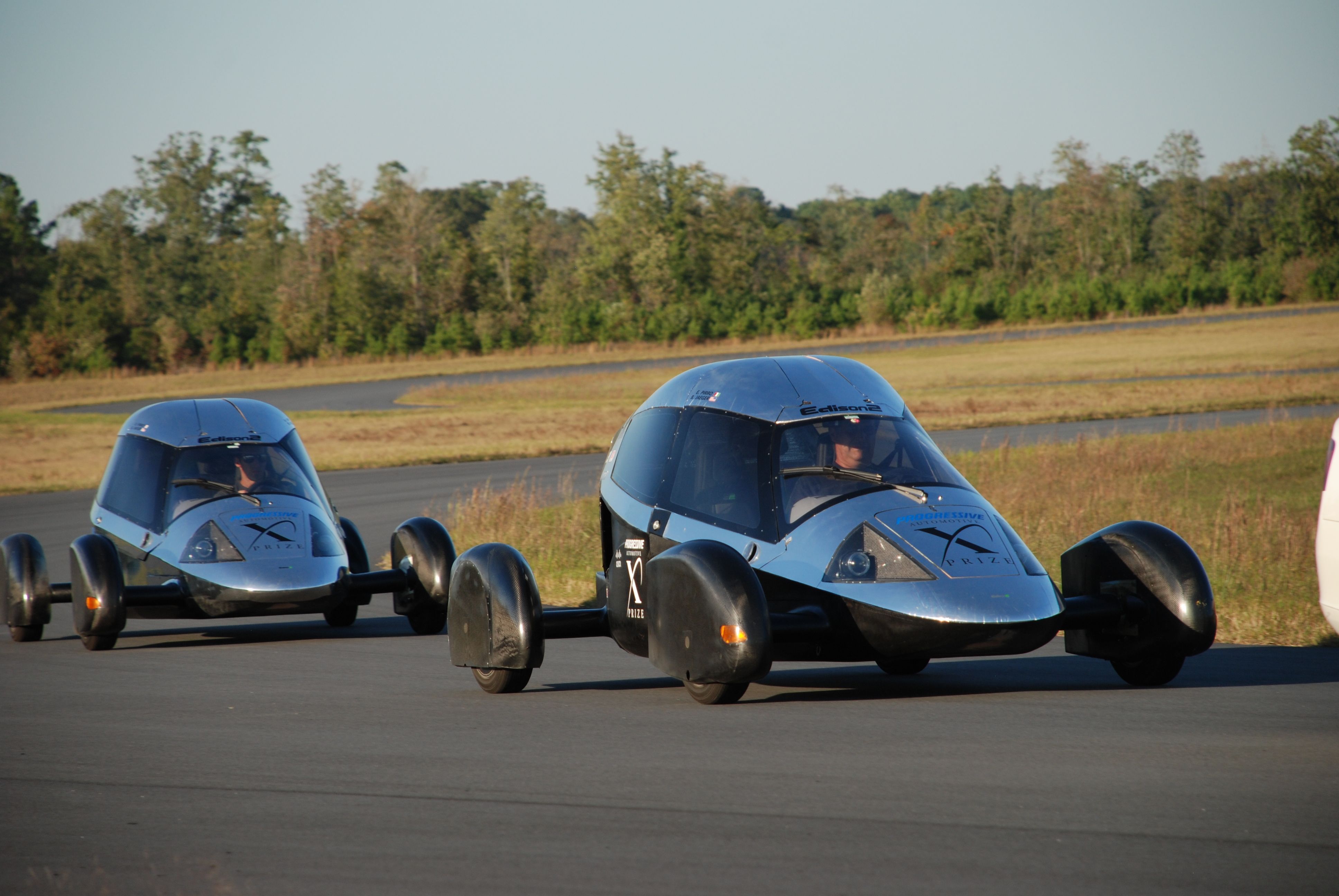Edison2 and the Media
In 2010 the media has been very good to Edison2.
The New York Times, NPR Morning Edition, Popular Mechanics, Slate, Jim Lehrer Newshour, GQ Germany, Car, Rolling Stone, the Washington Post, Automobile, CNN – our press list goes on and on, and includes numerous blogs and a host of newspapers and TV affiliates.
Our favorites? Autoblog Green got the ball rolling at the Detroit Auto Show in January with Detroit 2010: Edison2's Very Light Car scoffs at Electric Avenue. Journalist Ronald Ahrens penned several flattering stories, calling the Very Light Car “stunning” in his X Prize Notebook, followed by stories in the Times and Automobile. Jason Fagone’s article in Slate had perhaps the best title - Can some out-of-work car-racing engineers save the planet?
More important to us than the quantity of stories has been their quality. Writers understand what is significant about what we are doing. “The winner of the Auto X Prize proves that the next generation of cars will look like nothing we’ve ever seen before” says Rolling Stone, and we agree: breakthrough efficiency cannot come from modifying an existing car. Automobile quoted Felice Bianchi Anderloni – “Weight is the enemy, air resistance the obstacle – to illustrate our approach, while Car Magazine asks “Is weight, rather than power source, the real future of the automobile?”
Again, we agree. The future of the automobile is a car that simply take little energy to push, no matter the energy source. A car that is very light and extremely aerodynamic. A departure from the ordinary: the Very Light Car.

 Media,
Media,  Very Light Car
Very Light Car 

Reader Comments (4)
The human power vehicle builders have been sensitive to the weight and air drag issues since the movement started in the mid 70's. We now have streamined bicycles that can achieve almost 85 mph for a flying 200m sprint and 56 mph for a continuous hour, all powered by a single human being. Just imagine what you can do with a mechanical/electromechanical powerplant, the Very Light Car!. Bravo!
Nice work as usual. And I fundamentally agree that the energy needed to push the car down the road is the main issue, not the particular choice of power plant. You could make a bigger show yet, by pushing the limits of market pull a little more.
I would argue that you might not always want to put so much emphasis on weight. Ok, just slip a little D in VLC and make it VLDC. I get the impression you are willing to stay at a halfway there plateau for aero drag coefficient.
For range anxiety, the design point should be more like 80 mph since that is how fast most people drive when going on long trips where range anxiety would approach range panic.
I am roughly guessing, but the drag at 80 mph is probably 60% to 80% aerodynamic drag. So there is a lot of room for improvement, and in a typical tradeoff decision, the rolling resistance drag could come up some to get a balanced optimum. So why would you let rolling resistance increase? Answer: To enable some structural additions that would allow you to cut your aero drag by another 50%.
Weight causes acceleration and hill climing losses, though the quality of the regenerative braking system can determine how bad these are. I am not sure you gave full consideration for the possibilities here.
As you might guess, I would suggest an elevated airship body so you would start with a Cd more like .05-.06 and then combine wheels on each side in a horizontal tubular form so you would have only wind break on each side. Wheel pods would have to be integrated with the horizontal columns so that a train effect worked for straight line travel. Struts and straps to hold the airship suspended would add some drag, but overall, a budget of .08 seems reasonable. If your VLDC was formed this way, and some weight was added in the process, then you might see a balance between weight and air drag at 80 mph.
Thus, if you wanted to blow the fuel economy numbers sky high, you might try the Miastrada concept which is of course, about what I described.
Thank you for the updates gentlemen, it is appreciated, and like every time I put Rogaine on my head, it keeps the dream alive.
Craig C. (and edison2 folks if interested)
I looked at the human powered vehicles and am impressed. They may accomplish much the same thing that I am attempting with the Miastrada concept work. That is, using a body of revolution, single wide of course, and with enough elevation from the road to enable approximate free flow conditions.
I suspect that edison2 focused on the low, flat bottomed double wides, and just scrunched it down for their single wide version. And this would perhaps not get the full advantage of a real single wide form where the bottom was rounded, as in a body of revolution. The importance of this is that the airflow underneath is not confined to the lowest point, and is allowed to gradually fan out.
The human powered vehicles look to be very nearly body of revolution forms.
Do you know of any data on drag coefficient for the human powered forms? It is clearly very good since a human can manage not much more than 1 hp for a brief time, or so they say. (I doubt if I could.)
The exciting thing is that we might be getting down to the point where drag is low enough that batteries can actually work for practical vehicles, and as batteries get lighter, this goal gets ever closer.